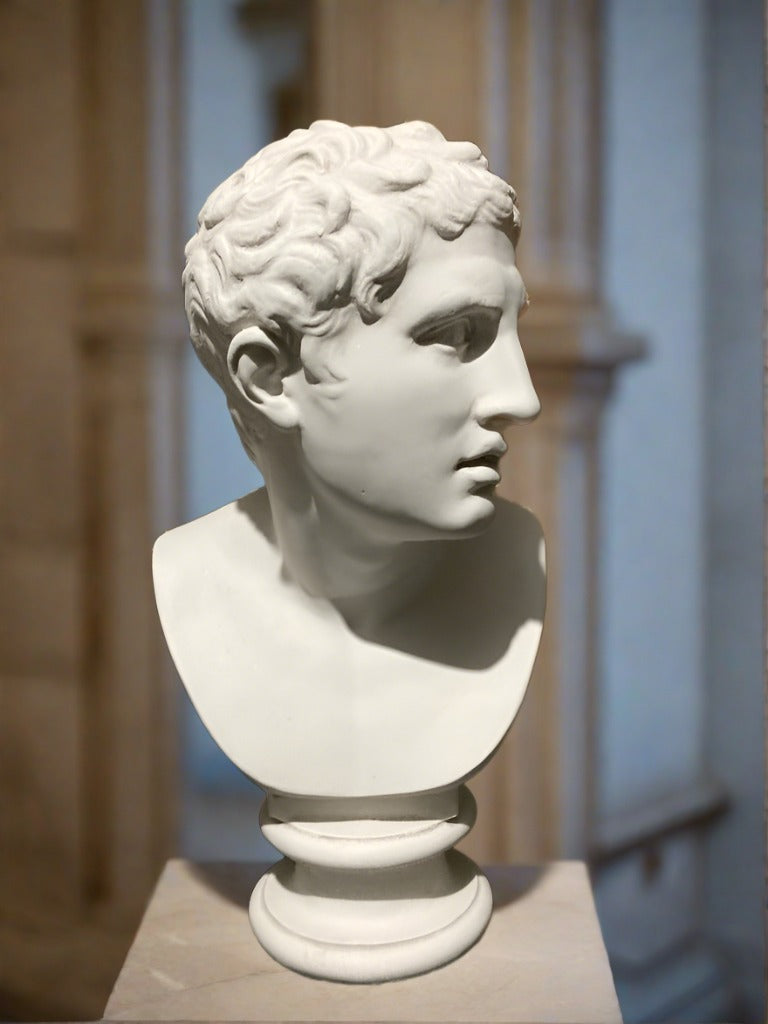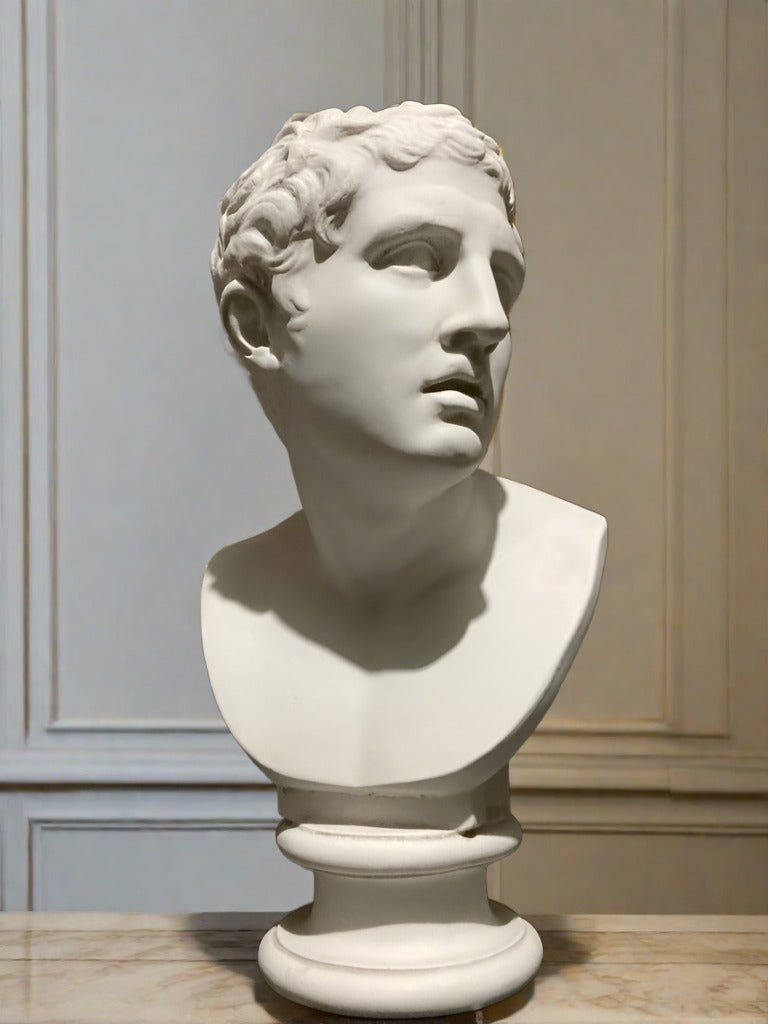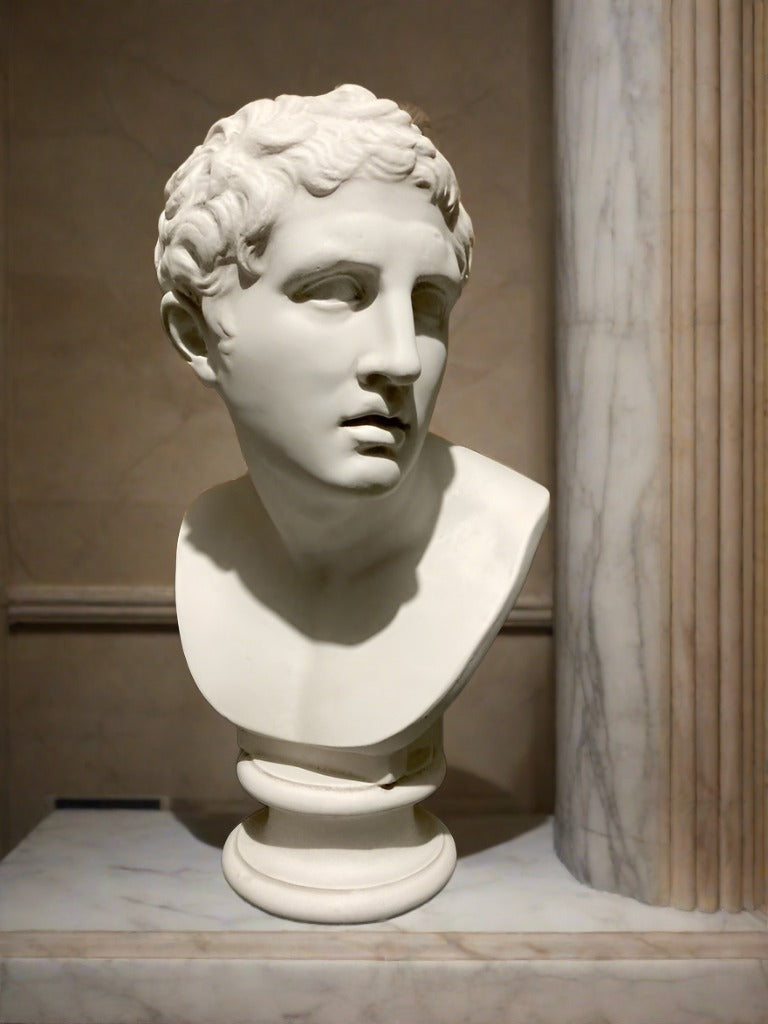Sculptured Arts Studio
Athlete A Greek
Athlete A Greek
Couldn't load pickup availability
An impressive Grand tour marble sculpture of the head of diskobolos, from the famous discus thrower statue created by the Greek sculptor Myron
When found the statue was Incorrectly restored, with an head that was allegedly found nearby when it was excavated in Hadrian’s Villa at Tivoli The Diskobolos of Myron is a Greek sculpture that represents a youthful ancient Greek athlete, poised as if ready to spin around and release the discus. The original Greek bronze dates from about 460–450 BC and is lost, but the work is known through numerous Roman copies in marble.
The Greek sculptor, known as Myron, is credited with creating sculptures with bolder poses and finer tuned rhythms. He was also praised for his attention to anatomical detail.
The Townley Discobolus, a Graeco-Roman copy of a fifth-century BC bronze statue, was excavated at Hadrian's Villa at Tivoli near Rome in 1791, and purchased by the dealer Thomas Jenkins the following year. After restoration by Carlo Albacini it was offered for sale in England and purchased by Charles Townley for the considerable sum of £400.
Jenkins assured Townley that in form and quality the Discobolus was comparable to the famous version owned by the Massimo family, which had been discovered ten years before and which the antiquarian Carlo Fea had since identified as a copy of the famous statue by the Greek sculptor Myron. Although the head of Townley's statue had been broken off, Jenkins claimed that it had been discovered lying beside the torso on the site, writing to Townley on 27 September 1794: 'The Head of Your Statue was not only found with it, but I believe You will See it is Precisely the Same Vein of Marble, that in Rome, there never was the slightest doubt of its authenticity'.
Size.
52 cm tall x 30 cm wide x 25 cm deep.






